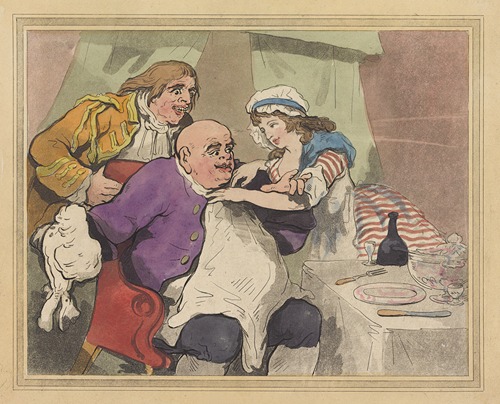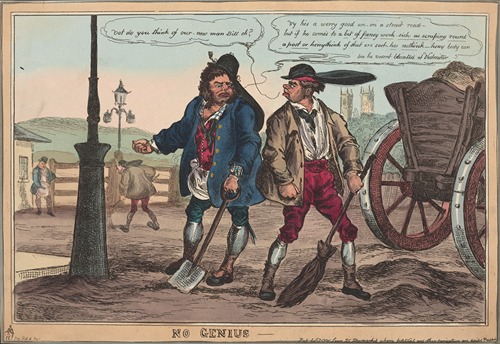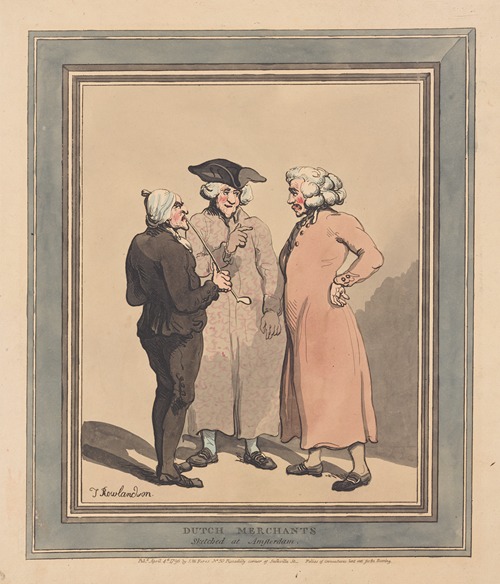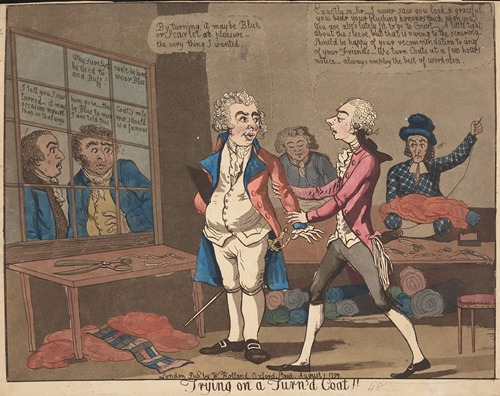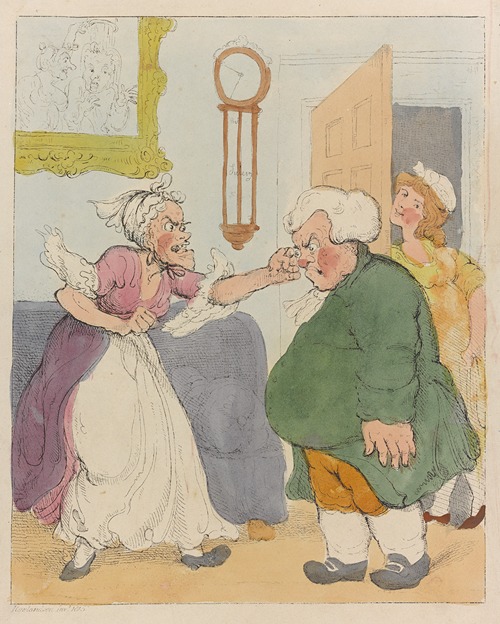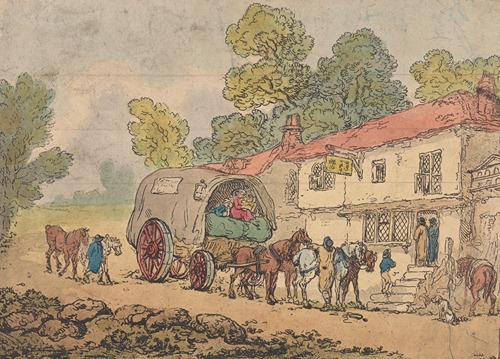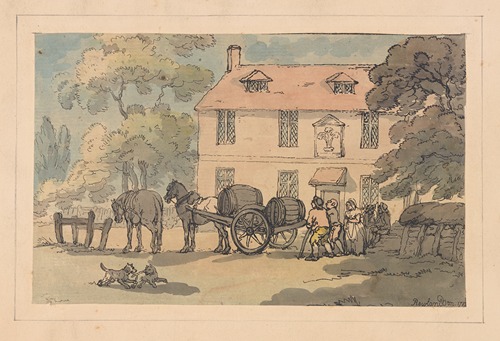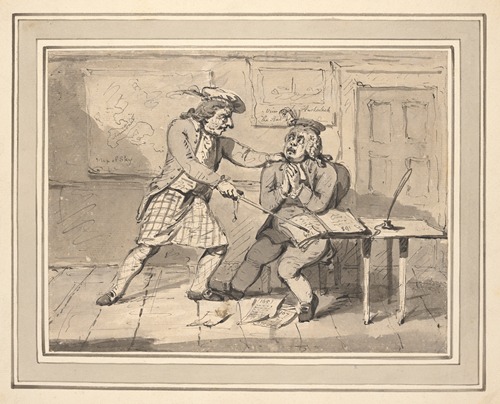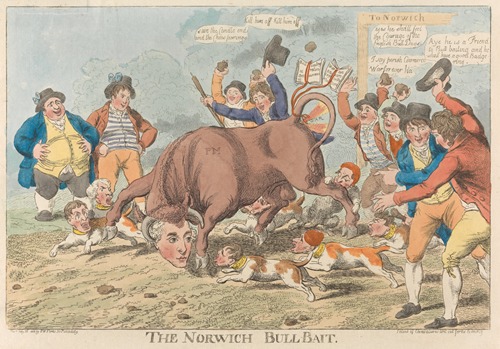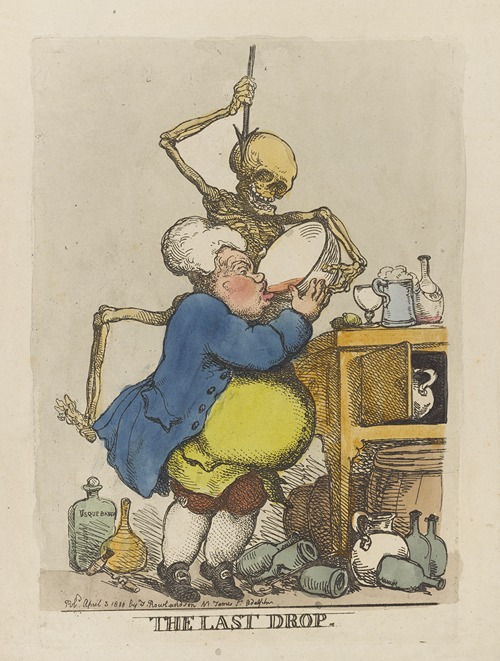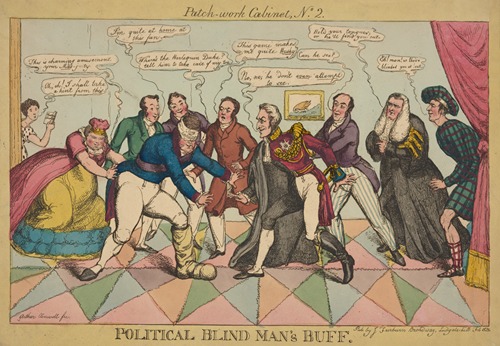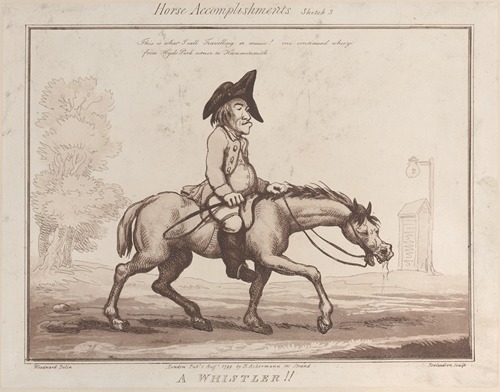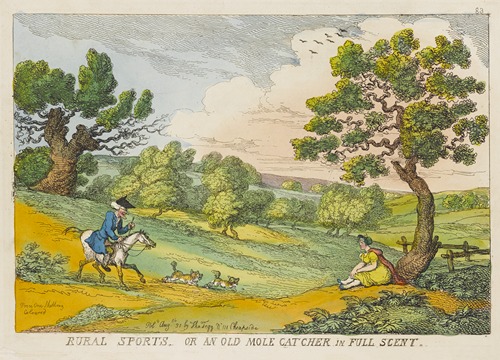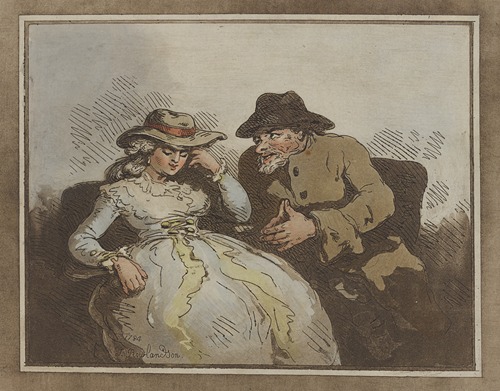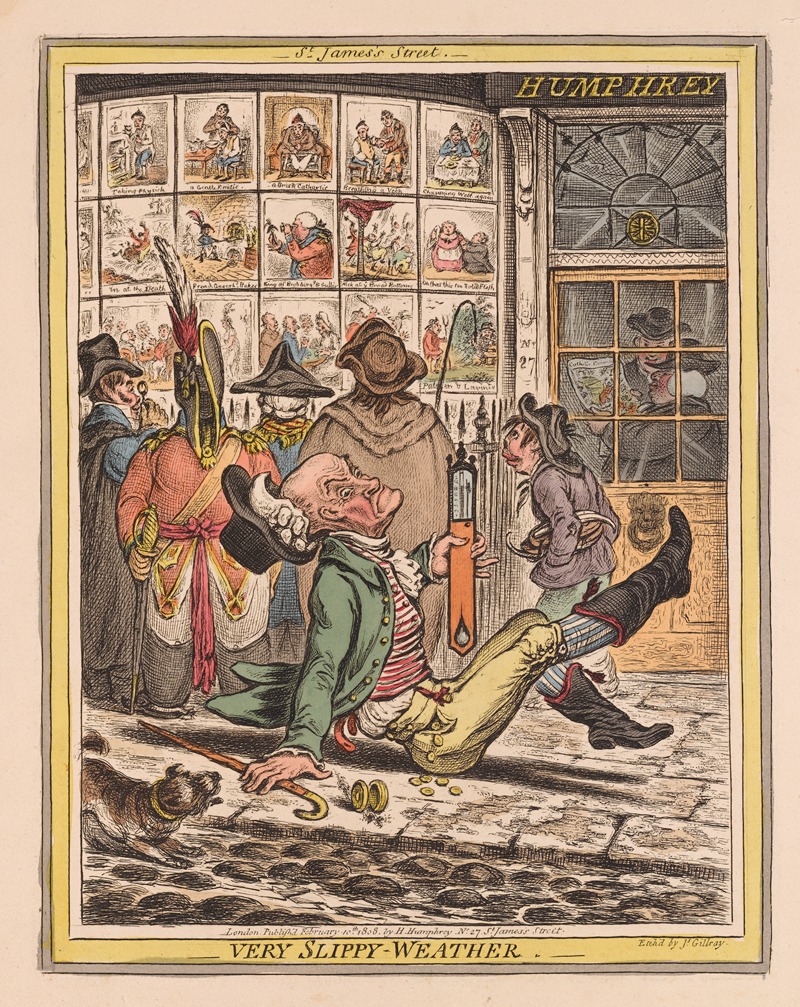
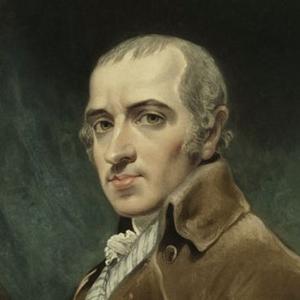
James Gillray was a British caricaturist and printmaker famous for his etched political and social satires, mainly published between 1792 and 1810. Many of his works are held at the National Portrait Gallery in London.
Gillray has been called "the father of the political cartoon", with his works satirizing George III, Napoleon, prime ministers and generals. Regarded as being one of the two most influential cartoonists, the other being William Hogarth, Gillray's wit and humour, knowledge of life, fertility of resource, keen sense of the ludicrous, and beauty of execution, at once gave him the first place among caricaturists.
He was born in Chelsea, London. His father had served as a soldier: he lost an arm at the Battle of Fontenoy and was admitted, first as an inmate and subsequently as an outdoor pensioner, at Chelsea Hospital. Gillray commenced life by learning letter-engraving, at which he soon became adept. Finding this employment irksome, he then wandered for a time with a company of strolling players. After a chequered experience, he returned to London and was admitted as a student in the Royal Academy, supporting himself by engraving, and probably issuing a considerable number of caricatures under fictitious names. His caricatures are almost all in etching, some also with aquatint, and a few using stipple technique. None can correctly be described as engravings, although this term is often loosely used to describe them. Hogarth's works were the delight and study of his early years. Paddy on Horseback, which appeared in 1779, is the first caricature which is certainly his. Two caricatures on Admiral Rodney's naval victory at the Battle of the Saintes, issued in 1782, were among the first of the memorable series of his political sketches.
The name of Gillray's publisher and print seller, Hannah Humphrey—whose shop was first at 227 Strand, then in New Bond Street, then in Old Bond Street, and finally in St James's Street—is inextricably associated with that of the caricaturist himself. Gillray lived with Miss (often called Mrs) Humphrey during the entire period of his fame. It is believed that he several times thought of marrying her, and that on one occasion the pair were on their way to the church, when Gillray said: "This is a foolish affair, methinks, Miss Humphrey. We live very comfortably together; we had better let well alone." There is no evidence, however, to support the stories which scandalmongers invented about their relations. One of Gillray's prints, "Twopenny Whist", is a depiction of four individuals playing cards, and the character shown second from the left, an ageing lady with eyeglasses and a bonnet, is widely believed to be an accurate depiction of Miss Humphrey.
Gillray's plates were exposed in Humphrey's shop window, where eager crowds examined them. One of his later prints, Very Slippy-Weather, shows Miss Humphrey's shop in St. James's Street in the background. In the shop window a number of Gillray's previously published prints, such as Tiddy-Doll the Great French Gingerbread Maker, Drawing Out a New Batch of Kings; His Man, Talley Mixing up the Dough, a satire on Napoleon's king-making proclivities, are shown in the shop window.
Gillray's eyesight began to fail in 1806. He began wearing spectacles but they were unsatisfactory. Unable to work to his previous high standards, James Gillray became depressed and started drinking heavily. He produced his last print in September 1809. As a result of his heavy drinking Gillray suffered from gout throughout his later life.
His last work, from a design by Bunbury, is entitled Interior of a Barber's Shop in Assize Time, and is dated 1811. While he was engaged on it he became mad, although he had occasional intervals of sanity, which he employed on his last work. The approach of madness may have been hastened by his intemperate habits.
In July 1811 Gillray attempted to kill himself by jumping out of an attic window above Humphrey's shop in St James's Street. Gillray lapsed into insanity and was looked after by Hannah Humphrey until his death on 1 June 1815 in London; he was buried in St James's churchyard, Piccadilly.
